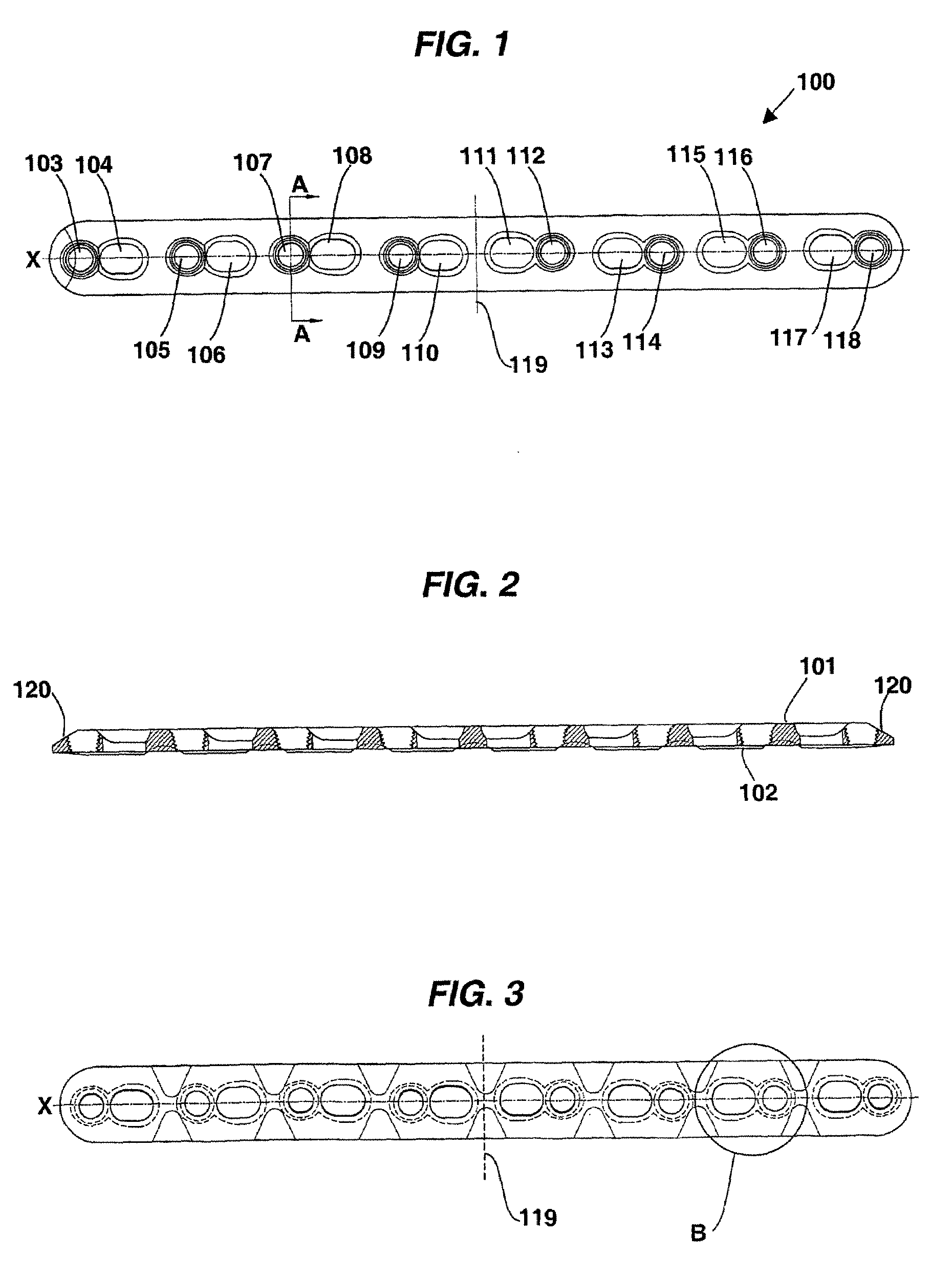Bone Plate
- Summary
- Abstract
- Description
- Claims
- Application Information
AI Technical Summary
Benefits of technology
Problems solved by technology
Method used
Image
Examples
Embodiment Construction
[0014]The above-mentioned objectives, among others, are achieved with the present invention, which consists in a bone plate that has an upper plane, intended to receive at least one bone screw and at least one fixation screw, and a lower plane, intended to support itself on a bone, in which said plate comprises at least one pair of holes laid out along at least one plane of the plate, wherein said pair of holes consists of a first hole intended to receive said at least one bone screw, and a second hole with a thread intended to receive said at least one fixation screw, characterized in that the holes of the pair are tangent to each other and separated between their centers at a distance at least equal to the sum of the radiuses of said holes, and in that the thread of at least one hole intended to receive a fixation screw is positioned at an angle in relation to a perpendicular axis of said plate.
[0015]Hence, according to a first aspect of the invention, the bone plate comprises the...
PUM
 Login to View More
Login to View More Abstract
Description
Claims
Application Information
 Login to View More
Login to View More - R&D
- Intellectual Property
- Life Sciences
- Materials
- Tech Scout
- Unparalleled Data Quality
- Higher Quality Content
- 60% Fewer Hallucinations
Browse by: Latest US Patents, China's latest patents, Technical Efficacy Thesaurus, Application Domain, Technology Topic, Popular Technical Reports.
© 2025 PatSnap. All rights reserved.Legal|Privacy policy|Modern Slavery Act Transparency Statement|Sitemap|About US| Contact US: help@patsnap.com



